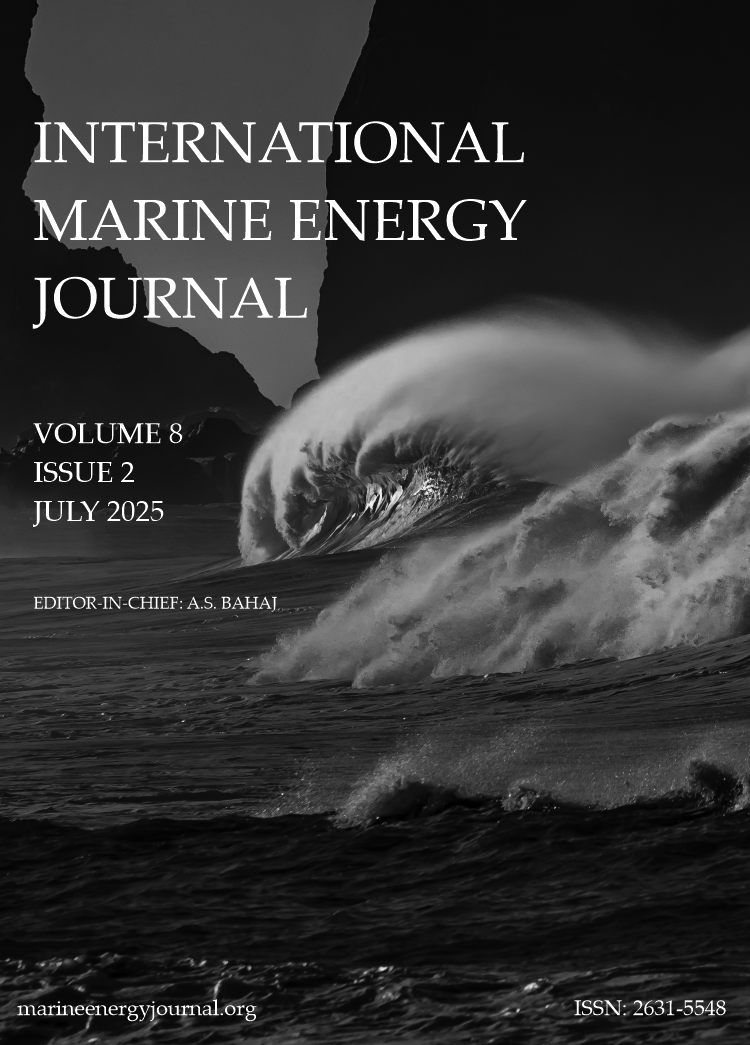A Methodology to capture the single blade loads on a cross-flow tidal turbine flume model
DOI:
https://doi.org/10.36688/imej.8.197-206Keywords:
fluid-structure interactions, vertical-axis turbines, Cross-flow tidal turbine, Experiment, finite element method, InstrumentationAbstract
The OPTIDE project aims to improve the efficiency and durability of hydrokinetic cross-flow tidal turbines (CFTT). CFTT are attractive for the exploitation of tidal energy, because of high area-based power densities of such turbine arrays, a simple design and the ability to operate under varying flow conditions.
Nevertheless, the efficiency of single CFTT is lower relative to the most commonly used axial turbine type. Furthermore the life time is often limited due to alternating and pulsating stresses.
A promising approach to overcome these drawbacks is intracycle blade pitching. In this case the angle of attack is continuously adjusted individually for each blade during the rotation.
The project aims to explore the influence of active blade pitching on CFTTs and to optimize it by numerical and experimental means.
Therefore, a lab-scaled three-bladed experimental turbine with embedded pitch actuators is developed.
The turbine is equipped with multiple full-bridges of strain gauges for the detection of tangential and radial components of the blade loads, from which the structural stress is calculated subsequently.
To ensure the turbines mechanical durability, weakly coupled fluid-solid-interaction (FSI) simulations have been performed.
Additionally, the FSI simulations show that a setup with strain gauges on a single blade support only allows for the measurement of the radial blade load component, as the measurements are distorted by pitching moments and secondary force paths.
A revised instrumentation setup is developed and presented. The FSI simulations are adapted, to prove the suitability of the revised setup.
Downloads
Published
How to Cite
Issue
Section
License
Copyright (c) 2025 Timo Bennecke, Shokoofeh Abbaszadeh, Karla Ruiz-Hussmann, Paul Joedecke, Pierre-Luc Delafin, Christian-Toralf Weber, Stefan Hoerner

This work is licensed under a Creative Commons Attribution 4.0 International License.
I the author/we the authors understand that I/we retain copyright over our article. I/we grant a licence to IMEJ to: publish my/our article under the terms of the Creative Commons Attribution (CC BY) License which permits use, distribution and reproduction in any medium, provided the original work is properly cited, and identify IMEJ as the original publisher.


